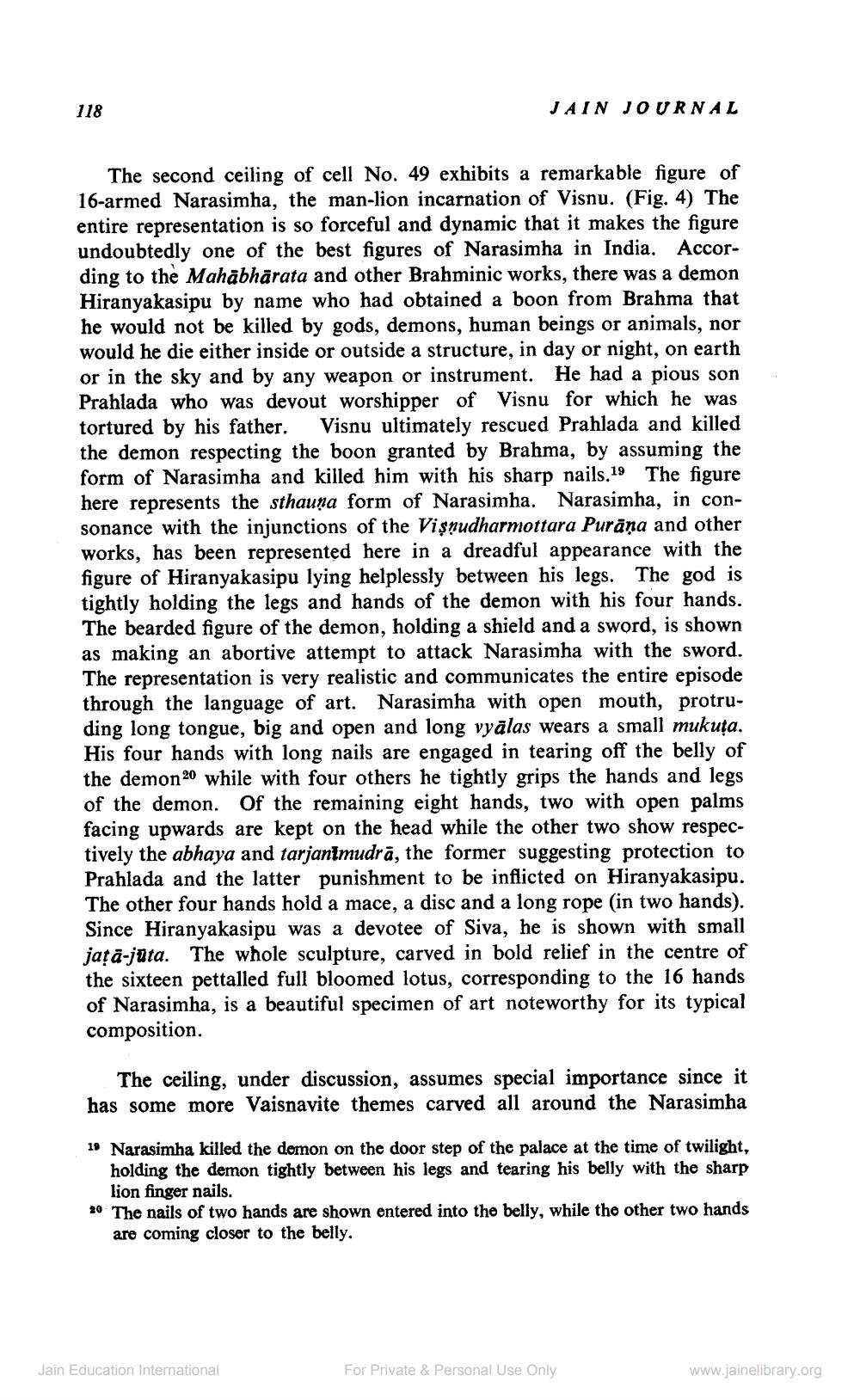________________
118
JAIN JOURNAL
The second ceiling of cell No. 49 exhibits a remarkable figure of 16-armed Narasimha, the man-lion incarnation of Visnu. (Fig. 4) The entire representation is so forceful and dynamic that it makes the figure undoubtedly one of the best figures of Narasimha in India. According to the Mahabharata and other Brahminic works, there was a demon Hiranyakasipu by name who had obtained a boon from Brahma that he would not be killed by gods, demons, human beings or animals, nor would he die either inside or outside a structure, in day or night, on earth or in the sky and by any weapon or instrument. He had a pious son Prahlada who was devout worshipper of Visnu for which he was tortured by his father. Visnu ultimately rescued Prahlada and killed the demon respecting the boon granted by Brahma, by assuming the form of Narasimha and killed him with his sharp nails.19 The figure here represents the sthauna form of Narasimha. Narasimha, in consonance with the injunctions of the Visnudharmottara Purana and other works, has been represented here in a dreadful appearance with the figure of Hiranyakasipu lying helplessly between his legs. The god is tightly holding the legs and hands of the demon with his four hands. The bearded figure of the demon, holding a shield and a sword, is shown as making an abortive attempt to attack Narasimha with the sword. The representation is very realistic and communicates the entire episode through the language of art. Narasimha with open mouth, protruding long tongue, big and open and long vyālas wears a small mukuta. His four hands with long nails are engaged in tearing off the belly of the demon 20 while with four others he tightly grips the hands and legs of the demon. Of the remaining eight hands, two with open palms facing upwards are kept on the head while the other two show respectively the abhaya and tarjanimudra, the former suggesting protection to Prahlada and the latter punishment to be inflicted on Hiranyakasipu. The other four hands hold a mace, a disc and a long rope (in two hands). Since Hiranyakasipu was a devotee of Siva, he is shown with small jaṭā-juta. The whole sculpture, carved in bold relief in the centre of the sixteen pettalled full bloomed lotus, corresponding to the 16 hands of Narasimha, is a beautiful specimen of art noteworthy for its typical composition.
The ceiling, under discussion, assumes special importance since it has some more Vaisnavite themes carved all around the Narasimha
19 Narasimha killed the demon on the door step of the palace at the time of twilight, holding the demon tightly between his legs and tearing his belly with the sharp lion finger nails.
20 The nails of two hands are shown entered into the belly, while the other two hands are coming closer to the belly.
Jain Education International
For Private & Personal Use Only
www.jainelibrary.org




